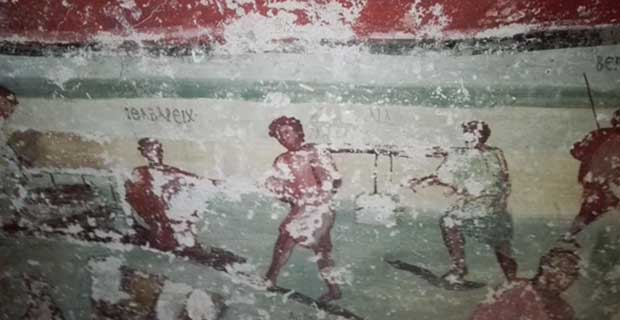Sponsored Listings:
These frescoes include paintings of grape vines which represent the social and agricultural life widespread during Classical antiquity thought to most likely belong in the Hellenistic period/ Early Roman period. The inscriptions and some artifacts found in the tomb are being analysed to give a more accurate time-frame of when this tomb was built and for whom it was built.
Her Excellency Minister of Tourism and Antiquities Lina Annab, following a visit to the site, confirmed that the Department of Antiquities would continue to excavate, expand and prepare the site for future visitors. Furthermore, Her Excellency confirmed that due to the tomb’s archaeological value, the site has been closed off to visitors and on-lookers to protect the archaeological integrity of the tomb as more tests are being run to discover more information about its significance.
Dr. Munther Jamhawi, Director General for the Department of Antiquities pointed out the fact that the city of Beit Ras is one of the ancient Hellenistic/Roman Decapolis League cities which was known during that time as Capitolias. The city was also mentioned in Arabic poetry as a unique location that included a theatre dated back to the second century and the remains of a Byzantine Church whose architectural styles were later used during the Islamic era and specifically during the early Umayyad period.
Source: travelnewsdigest.in










